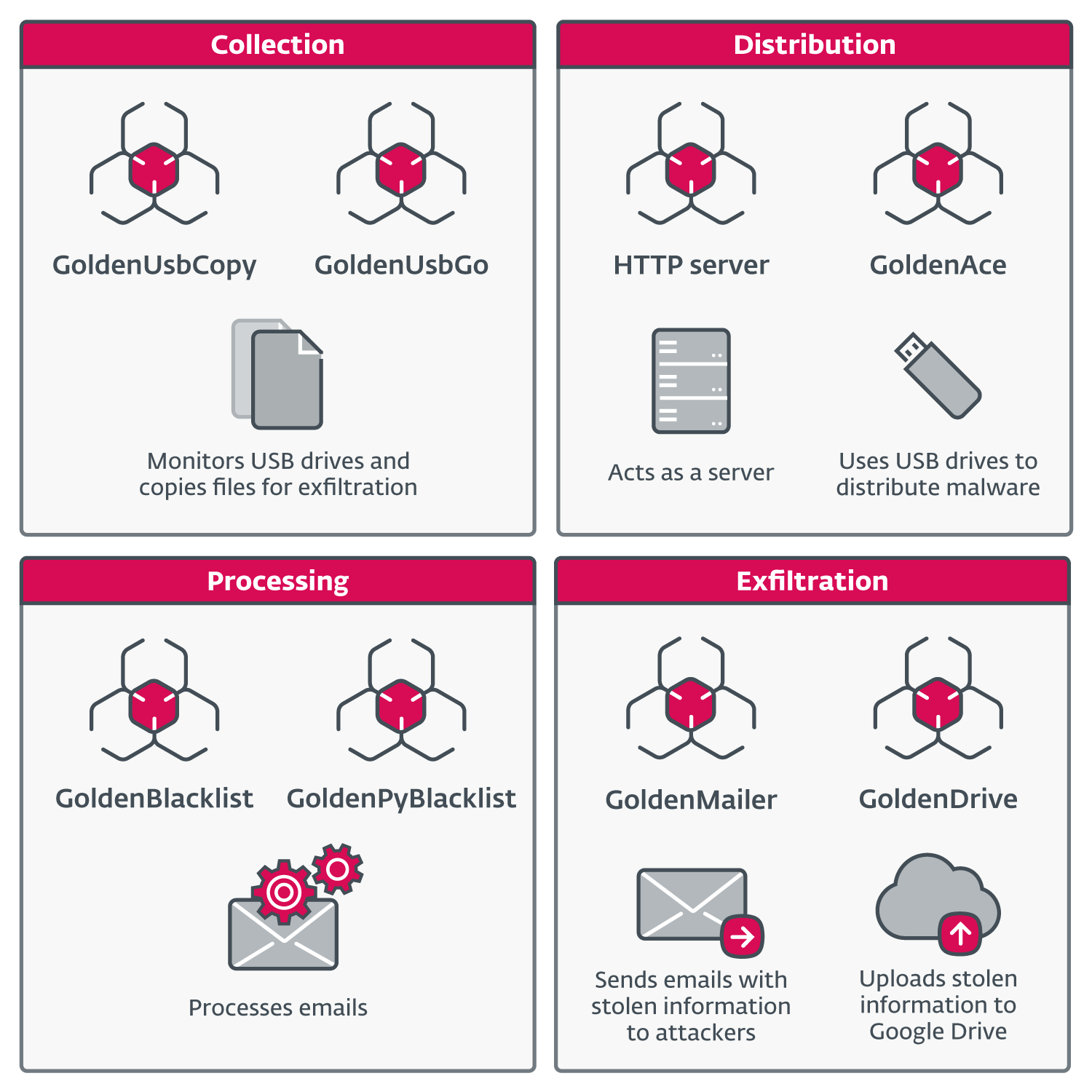
Credit:
ESET
The components in GoldenJackal’s latest toolset.
Credit:
ESET
The newly discovered toolkit is composed of many different building blocks, written in multiple languages and capabilities. The overall goal appears to be increased flexibility and resiliency in the event one module is detected by the target.
“Their goal is to get hard to obtain data from air-gapped systems and stay under the radar as much as possible,” Costin Raiu, a researcher who worked at Kaspersky at the time it was researching GoldenJackal, wrote in an interview. “Multiple exfiltration mechanisms indicate a very flexible tool kit that can accommodate all sorts of situations. These many tools indicate it’s a highly customizable framework where they deploy exactly what they need as opposed to a multi purpose malware that can do anything.”
Other new insights offered by the ESET research is GoldenJackal’s interest in targets located in Europe. Kaspersky researchers detected the group targeting Middle Eastern countries.
Based on the information that was available to Kaspersky, company researchers couldn’t attribute GoldenJackal to any specific country. ESET has also been unable to definitively identify the country, but it did find one hint that the threat group may have a tie to Turla, a potent hacking group working on behalf of Russia’s FSB intelligence agency. The tie comes in the form of command-and-control protocol in GoldenHowl referred to as transport_http. The same expression is found in malware known to originate with Turla.
Raiu said the highly modular approach is also reminiscent of Red October, an elaborate espionage platform discovered in 2013 targeting hundreds of diplomatic, governmental, and scientific organizations in at least 39 countries, including the Russian Federation, Iran, and the United States.
While much of Tuesday’s report contains technical analysis that is likely to be too advanced for many people to understand, it provides important new information that furthers insights into malware designed to jump air gaps and the tactics, techniques, and procedures of those who use it. The report will also be useful to people responsible for safeguarding the types of organizations most frequently targeted by nation-state groups.
“I’d say this is mostly interesting for security people working in embassies and government CERTs,” Raiu said. “They need to check for these TTPs and keep an eye on them in the future. If you were previously a victim of Turla or Red October I’d keep an eye on this.”





